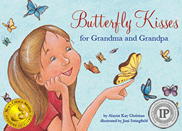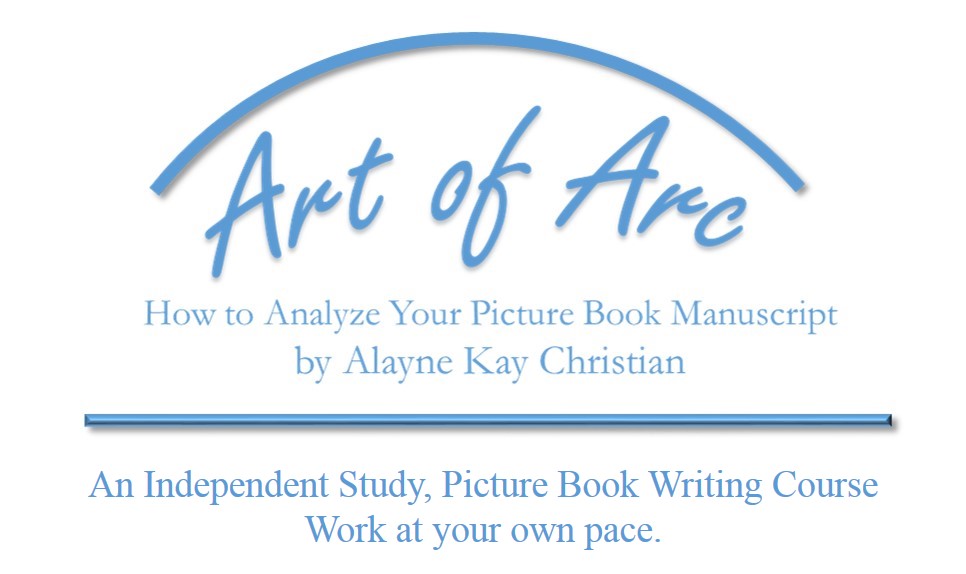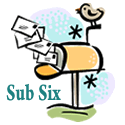
For this round of Kid-Lit Writing Wisdom Q & A, I asked the team why it’s important for writers to read children’s books and how one might get the most out of reading them.
I thought it would be good to start this post with the definition of mentor texts. The Iowa Reading Research Center defines mentor texts as “. . . written pieces that serve as an example of good writing for student writers. The texts are read for the purpose of studying the author’s craft, or the way the author uses words and structures the writing. The goal is to provide students a model they could emulate in crafting their own piece.”
Because I once again have the wordiest answer, I will start with my answer to the question. However, before I get started, I’d like to wish a couple of Laura Gehl’s newly released board books, SOCCER BABY and BASEBALL BABY, a belated HAPPY BIRTHDAY! And I’m excited to share that my book THE WEED THAT WOKE CHRISTMAS has won another literary award! Congratulations to illustrator Polina Gortman and me, of course : – )


IN THE END, YOU’LL END UP BEING A DIFFERENT WRITER THAN YOU WERE BEFORE YOU STARTED DIGGING DEEPER
When I first started studying the art of children’s writing, veteran authors advised repeatedly, “read, read, read.” And so I read. I would bring home 50 picture books from the library (usually biweekly) loaded in my bag with wheels. What I didn’t understand, until I had read hundreds of picture books, was reading them wasn’t enough. What I really needed to do was analyze them. But how could I analyze them, if I didn’t know what I was looking for? So, my next step was to take writing courses specific to picture book writing. In those courses, I got a sense of story arc (narrative arcs and character arcs). When I started doing professional critiques, the “sense” of arc that I had learned from courses gave me enough instinct to know when something was off with the plot of the picture book I was critiquing. But I didn’t always know how to explain the problems to the author of the manuscript. So, I worked to find the answers and explain the issues. I continued to work to understand arc and plot deeper. I read craft books, I did searches on the Internet when something wasn’t clear to me, I took more courses, and I continued reading picture books. That’s when I discovered that the only way I was really going to learn what I wanted to know was to dissect the stories I read. And that’s exactly what I did. In the process of trying to help others, I helped myself as an author. I came to understand fully what makes a powerful beginning, what makes an engaging or compelling middle, and what makes a satisfying ending. I learned the importance of knowing your character’s motivation, want, and need. I discovered the power of solid cause and effect and growing tension. I love seeing how authors leave room for illustrators and how they both tell part of the story. I discovered the importance of pacing and so much more. Once, I understood how to build stories, and I had helped a hundred or so writers understand the same via my critiques, I wrote my picture book writing course, Art of Arc: How to Write and Analyze Picture Books and Manuscripts. Does the fact that I’m a retired acquisitions editor and I offer professional critiques, a bit of mentoring, and a writing course mean that I no longer need mentor texts? Absolutely not. There is still much more to picture book writing besides the plot. Today, I analyze picture books for word choice, voice, and execution of the idea or theme (usually looking for why it stands out). I pay attention to unique characters and character building. I study the huge variety of storytelling structures. I read humor and dream of one day writing something funny. I read heart-tuggers that connect me emotionally to the character and story (That’s the kind of story I tend to write.) I look for “why” I enjoy a book or “why” I sometimes wonder how a book ever ended up published (meaning I didn’t enjoy it). I’m always looking for something, and I’m always learning. I love studying books for language—especially lyrical stories—love them! I could go on forever about the treasures found when you start looking deeply into a story instead of just reading it. But I won’t.
Analyzing or dissecting mentor texts will stretch you as a writer. You’ll be more willing to take risks and try new things. You’ll start wondering things like, what if I used that format instead? What if I tried that cool or clever strategy? The puzzle pieces of what makes a sellable picture book will start slipping into place. And in the end, you will be a different writer than you were before you started digging deeper.
We have lots of great wisdom on this topic, and it’s time to make way for those answers. I do want to say that many moons ago, I discovered that our wise author Marcie Flinchum Atkins knows her way around a mentor text, and you can find some of her posts here and here. At the end of this post, Marcie offers some excellent tips and tools for using mentor texts. Also, our wise author Kirsti Call is the co-founder and of Reading for Research Month (a.k.a. REFOREMO) along with Carrie Charley Brown. They not only offer this very focused annual challenge. They also offer posts year round that walk us through a variety of books with hints regarding what they might teach us as writers. In addition, look around their site for lots of resources. Finally, if you join their Facebook page, they have lots of files that list great mentor text books by categories.
Some of our authors, Vivian Kirkfield for example, participate in Susanna Hill’s Perfect Picture Book Fridays. Participating in this activity will expose you to lots of different books, plus Susanna offers a list of books by themes (scroll down on linked page). Following are some other links that will lead you to mentor text info from Marcie and Reforemo.
http://www.reforemo.com/2019/09/mentor-text-talk-with-author-marcie.html
https://www.marcieatkins.com/tag/reforemo/
https://groggorg.blogspot.com/2015/03/show-me-way-mentor-texts-as-lights-into.html
10 REASONS TO READ CHILDREN’S BOOKS
(ESPECIALLY PICTURE BOOKS)
(AND DEFINITELY PICTURE BOOK BIOGRAPHIES)
1. To learn something new.
2. To soak in the story.
3. To examine the structure.
4. To observe the page turns.
5. To analyze what makes the story work.
6. To dissect the craft.
7. To enjoy the illustrations.
8. To investigate the word choices.
9. To evaluate the back matter.
10. Because you can’t not read them!
GET INSPIRED TO SIT DOWN AND WRITE!
I read children’s books to marvel at thoughtful page turns, to laugh at witty spreads, to appreciate the interplay between text and art, to let various rhythms and cadences wash over me, to get refrains stuck in my head, to admire different text structures, to soak in new information, to feel characters tug at my heartstrings, to think, “I wish I had written that,” and…most of all…to get inspired to sit down and write!
READING PICTURE BOOKS ALOUD HELPS ME DELIGHT IN STORYTELLING AND LUSCIOUS SOUNDS
I read picture books to learn about what works and what doesn’t, to appreciate the poetry of sparse text, to feel and to heal. Reading picture books aloud with children helps me delight in storytelling and luscious sounds. And of course reading picture books inspires me to create my own stories, putting words together in ways that (hopefully) evoke laughter, love and connection.
WHY I LOVE READING CHILDREN’S BOOKS
As a children’s book writer, it’s vital for me to read children’s books. I write chapter books and picture books, so those are the book genres that I mainly read. I like to read children’s books for several reasons. First, it’s important to keep up to date with all the new books. I love reading newly published picture books so I can stay current about topics and what is selling at the moment. Second, I can apply the knowledge I gain from reading children’s books to my writing process. I use books as “mentor texts,” meaning they teach me about writing in some way. For example, if I’m writing a non-fiction book about sea life, I will read every current similar book I can find to see how other authors handled the subject. Or, if I’m trying to add more “heart” into my fiction picture book manuscript, I will read books that I know pull at the heartstrings. I also notice how the author chose specific words and language patterns, handled pacing, left room for the illustrator, and other craft points. Third, I use current children’s books as “comparative titles” that can help me pitch my manuscripts and place them in the marketplace, comparing my manuscript to a recently-published title, and also showing how my manuscript is different. Finally, the most important reason that I read picture books and chapter books is that I LOVE them! I enjoy reading children’s books almost as much as I like writing them! A perfect afternoon would be spent curling up with a cup of mint tea, a gluten-free muffin, and a stack of wonderful children’s books!
READING KID LIT MAKES ME FEEL LIKE A CHILD AGAIN, WHICH IS HOW WE NEED TO FEEL TO WRITE BOOKS ABOUT AND FOR CHILDREN
Every Wednesday morning, we start our critique session with a table piled high with books; childhood favourites, classic picture books, brand new purchases, library searches and recommendations. It’s one of my favourite parts of the week. I always feel like a kid in a sweet shop!
It gets our conversation bubbling immediately, what we like, what we don’t like, what we find clever, beautiful, funny, endearing, or even why we don’t like something or think it could have ended differently. It opens up conversations about craft and style, and it also gets our own creative juices flowing. It helps us generate new ideas or writing styles and helps us critique our wobbly new manuscripts at a much higher level and gives us courage to try new things. Sometimes it even sparks a whole new idea for a manuscript too!
I think the reason why we read children’s picture books as authors is endless and unquestionably important. But, for me personally, why I love it so much, is because it brings me and my fellow critique partners together weekly through a shared love of children’s writing. And most importantly, it makes me feel like a child again. Which is just what we need to feel when we are writing books about them and especially for them!
IF WE’RE GOING TO WRITE BOOKS, WE NEED TO LEARN FROM THE BEST
If we are going to create stories, we must also admire stories. If we are going to write books, we must learn from the best. One of the most accessible ways to learn about what the greatest writers are doing is to utilize your library card. I make a habit of keeping my holds and checkouts at the library maxed out. At least once a week, I take a big stack of picture books and read and analyze them.
One of my favorite ways to determine which ones I want to study in depth is to read through the stack of books. I make three stacks:
1) Not for me.
2) These are great, but not my style.
3) THIS is the kind of writing I want to do.
Pile #3 is the one that I take more extensive notes on. It’s the type of books I type up to see how it looks on the page, examine the structure, and bask in the language.
For more posts about reading mentor texts, you can check out the many mentor texts posts on my blog.
For a more extensive post on how I organize and keep track of my reading, you can check out this bullet journaling post.
One other tip: If I’m feeling stuck or mired in muck about my own writing, often reading stellar books can bring me back. It usually takes me only about 20 minutes of immersive reading to realize I really DO want this writing life, and I really want to create stories.
Next week, we will get more great tips and stories from Beth Anderson, Vivian Kirkfield, Ellen Leventhal, Dawn Babb Prochovnic, Michelle Nott, and Rosie Pova.
TO READ PART 1 OF “LONG AND WINDING ROAD TO PUBLICATION” click here.
TO READ PART 2 OF “LONG AND WINDING ROAD TO PUBLICATION” click here.
TO READ PART 3 OF “LONG AND WINDING ROAD TO PUBLICATION” click here.
TO READ THE TEAM MEMBERS’ ANSWERS TO “MY MOST IMPORTANT LESSON LEARNED” click here for Part One and here for Part Two.
TO READ MORE ABOUT THE KID-LIT WRITING WISDOM TEAM AND THEIR BOOKS click here.












 Last month, I participated in
Last month, I participated in  This month, I’m participating in Vivian Kirkfield’s
This month, I’m participating in Vivian Kirkfield’s  I’m also participating in
I’m also participating in 














